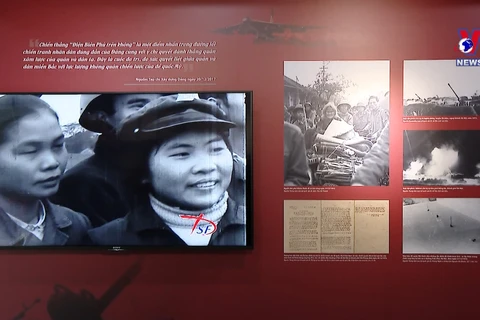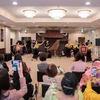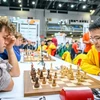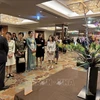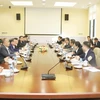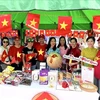Can Tho (VNA) – An exhibition featuring the Mau Than General Offensive and Uprising in 1968 spring, and another on the Paris Peace Accords were opened in the Mekong Delta city of Can Tho on December 13.
The “55 years of Mau Than 1968 – Unfading memories” exhibition displays 60 photos and many valuable items depicting historical stories and memories of the army and people of Can Tho in particular, and the southern region and the whole country in general in the resistance war against foreign invaders, for national liberation and reunification.
Meanwhile, the “The Paris Agreement on Vietnam – The Door to Peace” exhibition comprises of over 150 documents, objects and photos highlighting efforts of the Vietnamese people for the negotiations, signing and enforcement of the Paris Peace Accords.
The two will remain open until April 10.
The general offensive began in the early morning of January 31 in 1968 when liberation forces simultaneously launched attacks on bases of US troops and the US-backed southern government army in cities such as Hue, Da Nang, Quy Nhon and Saigon, and hundreds of localities from Quang Tri to Ca Mau.
The offensive helped destroy huge amounts of facilities and logistics used by the enemy. The seven-month long campaign ended with tens of thousands of enemy troops annihilated, their 600 "strategic hamlets" destroyed, and 100 communes with a combined population of 1.6 million liberated.
People in rural areas also took this opportunity to rise up against the US-backed administration.
It marked a strategic turning point for the resistance war against the US and its allies. It caused the US a ‘sudden shock’, disrupting their strategic plan, shaking the White House, the Pentagon and all of the US, and forced President Lyndon Johnson to deescalate the war and agree to sign the historic Paris Peace Accord. The victory also helped lead to the liberation of southern Vietnam and national reunification in 1975.
On January 27, 1973, the Paris Peace Accords – an agreement to end the war and restore peace in Vietnam – were signed between the Democratic Republic of Vietnam, the National Front for the Liberation of South Vietnam, the Republic of Vietnam, and the US.
The agreement put an end to the longest and most difficult struggle in the history of Vietnam’s diplomacy, with 202 public meetings held over the war lasting for four years, eight months, and 14 days./.
The “55 years of Mau Than 1968 – Unfading memories” exhibition displays 60 photos and many valuable items depicting historical stories and memories of the army and people of Can Tho in particular, and the southern region and the whole country in general in the resistance war against foreign invaders, for national liberation and reunification.
Meanwhile, the “The Paris Agreement on Vietnam – The Door to Peace” exhibition comprises of over 150 documents, objects and photos highlighting efforts of the Vietnamese people for the negotiations, signing and enforcement of the Paris Peace Accords.
The two will remain open until April 10.
The general offensive began in the early morning of January 31 in 1968 when liberation forces simultaneously launched attacks on bases of US troops and the US-backed southern government army in cities such as Hue, Da Nang, Quy Nhon and Saigon, and hundreds of localities from Quang Tri to Ca Mau.
The offensive helped destroy huge amounts of facilities and logistics used by the enemy. The seven-month long campaign ended with tens of thousands of enemy troops annihilated, their 600 "strategic hamlets" destroyed, and 100 communes with a combined population of 1.6 million liberated.
People in rural areas also took this opportunity to rise up against the US-backed administration.
It marked a strategic turning point for the resistance war against the US and its allies. It caused the US a ‘sudden shock’, disrupting their strategic plan, shaking the White House, the Pentagon and all of the US, and forced President Lyndon Johnson to deescalate the war and agree to sign the historic Paris Peace Accord. The victory also helped lead to the liberation of southern Vietnam and national reunification in 1975.
On January 27, 1973, the Paris Peace Accords – an agreement to end the war and restore peace in Vietnam – were signed between the Democratic Republic of Vietnam, the National Front for the Liberation of South Vietnam, the Republic of Vietnam, and the US.
The agreement put an end to the longest and most difficult struggle in the history of Vietnam’s diplomacy, with 202 public meetings held over the war lasting for four years, eight months, and 14 days./.
VNA

